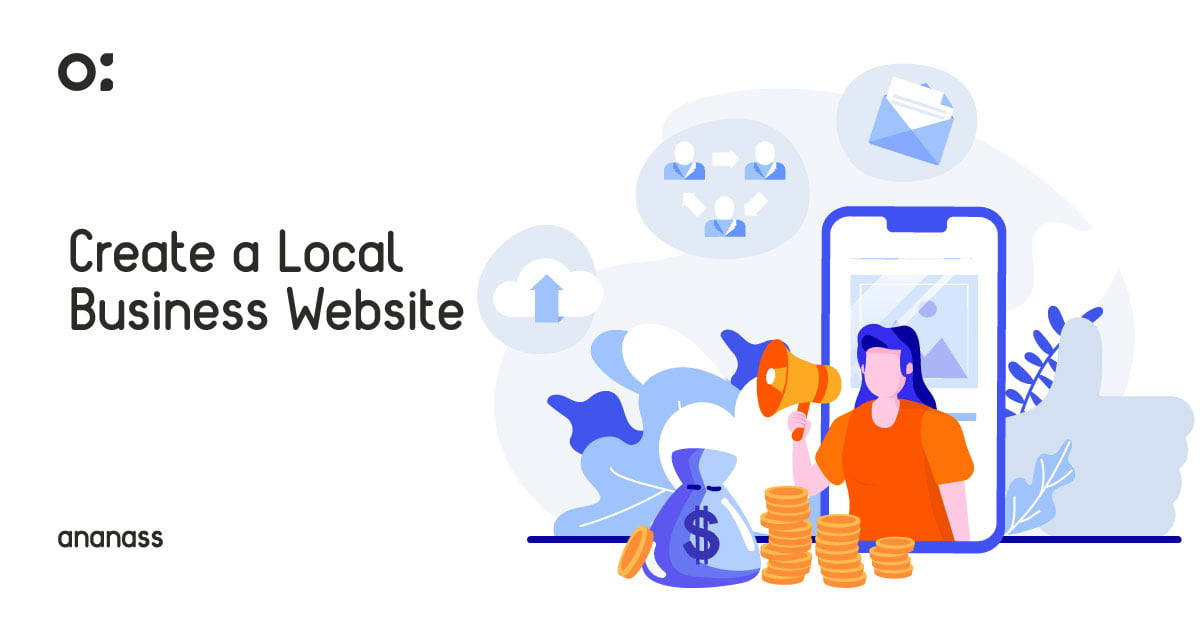
Website for local business How to Create a Website for

Geometric shapes have long fascinated humankind. From ancient architecture to modern art, these shapes are ubiquitous in human culture. But why are we so drawn to these shapes?
For one, geometric shapes are visually appealing. The clean lines and symmetry of these shapes are aesthetically pleasing and easy on the eyes. They create a sense of order and balance that our brains find satisfying.
Moreover, geometric shapes are often associated with mathematical concepts, which appeal to our rational, logical side. They represent precision and exactness, something we strive for in science and technology.
But beyond their visual and mathematical appeal, geometric shapes also hold symbolic meanings. The triangle, for instance, can represent stability and strength, while the circle can symbolize unity and infinity.
In art, geometric shapes have been used by artists such as Piet Mondrian and Kazimir Malevich to create abstract compositions that challenge the traditional notions of representational art.
The fascination with geometric shapes is multifaceted, encompassing both visual, mathematical, and symbolic meanings. Whether we appreciate them in art or incorporate them in design, geometric shapes continue to intrigue and inspire us.
Designing a harmonious layout with a grid system is an effective way to create a professional and cohesive look for your design project. Grids provide a structure for design elements to follow, allowing for a balanced and well-organized overall composition.
One of the most important aspects of using a grid system is to establish a hierarchy. Determine which elements are most important and assign them greater prominence within the grid. This will help guide the user’s eye through the design in a logical and intuitive way.
Another key factor in creating a harmonious layout with grids is to use consistent spacing. Ensure that there is a uniform distance between elements, whether it be margins, gutters, or individual elements themselves. This consistency creates a sense of cohesion that ties all elements together.
Overall, using a grid system is a solid foundation for any design project. It enables you to create a structured and well-organized composition that is both visually appealing and functional. By paying attention to hierarchy and spacing, you can create a harmonious design that effectively communicates your message to your audience.
When we look at the world around us, we see both symmetry and asymmetry in everything from the flowers in our gardens to the buildings in our cities. But what impact do these concepts have on our daily lives?
Symmetry is often associated with beauty and balance. In art and design, symmetry is used to create a pleasing and harmonious composition. In nature, symmetry can indicate health and genetic fitness. On the other hand, asymmetry is often associated with uniqueness and creativity. In art and design, asymmetry is used to create tension and interest. In nature, asymmetry can indicate genetic diversity and adaptability.
However, the impact of symmetry and asymmetry goes beyond aesthetics. Research has shown that our brains respond differently to symmetrical and asymmetrical stimuli. Symmetry has been associated with increased activity in the reward center of the brain, while asymmetry has been associated with increased activity in the analytical and decision-making regions.
Overall, both symmetry and asymmetry have their place and significance in our lives. They have the power to evoke emotions, influence our decisions and perceptions, and communicate important information.
The use of shapes is an essential consideration in creating a compelling user experience (UX). Shapes can impact the way users perceive and interact with a website, application, or product. Shapes communicate hierarchy, guide attention, and signify importance.
For example, squares or rectangles represent stability and balance, while circles represent unity and continuity. Triangles convey motion or direction, and asymmetrical shapes suggest spontaneity or creativity.
Moreover, shapes also influence the emotional response of users. For instance, sharp, angular shapes can reflect aggressiveness or dominance, while soft, curved shapes can convey warmth or comfort.
To create a cohesive and visually appealing UX, designers have to consider the shapes used in the design. The shapes should complement and reinforce the message or the purpose of the design while providing visual interest that attracts users.
Shapes are powerful tools that designers can leverage to enhance the UX. By thoughtfully incorporating the right shapes into the design, designers can create a positive impact on the user’s experience.
Minimalism and geometric design are two popular design trends that seem to go hand in hand. The sleek and clean lines of geometric shapes are perfect for creating a minimalist aesthetic that is pleasing to the eye. In this blog post, we will explore the world of minimalism and geometric design and how these two design trends can work together to create stunning visual concepts.
Minimalism is a design philosophy that seeks to strip away all unnecessary elements to create a simple, pared-down aesthetic. This philosophy is often reflected in the use of basic geometric shapes such as circles, squares, and triangles. When combined with minimalism, these shapes can create a striking effect that draws the eye in.
Geometric design, on the other hand, is all about using simple shapes and lines to create complex patterns. This is often seen in the use of repeating geometric shapes such as hexagons or triangular tessellations. When implemented effectively, geometric design can create a sense of order and harmony in a piece.
When these two design trends are brought together, the result can be stunning. By using geometric shapes and patterns within a minimalist design framework, the designer can create a visually engaging piece that is both simple and complex. These designs often rely on negative space, or the space between shapes, to create balance and harmony.
If you’re interested in incorporating minimalism and geometric design into your work, start by experimenting with basic shapes and patterns. Keep your color palette simple and focus on the interplay between the shapes and negative space. With practice and experimentation, you’ll be able to create stunning minimalist geometric designs that are sure to turn heads.
Experimental geometry is an increasingly popular trend in web design. By breaking away from traditional rectangle-shaped layouts and incorporating unique shapes and patterns, designers are pushing boundaries and creating visually stunning websites. The use of experimental geometry allows for a level of creativity and originality that can set a website apart from its competitors.
One of the benefits of using experimental geometry is the ability to create a seamless flow throughout the website. By creating custom shapes and patterns, the designer can guide the viewer’s eye through the site, leading to a more engaging and memorable experience.
However, it is important to keep in mind that experimental geometry can be a risky endeavor. The use of unconventional shapes and patterns can be difficult to execute, and if done poorly, can confuse and alienate users. It is important to strike a balance between creativity and user-friendliness.
Overall, experimental geometry is a valuable tool in web design, adding a unique and visually impressive element. However, it should be used thoughtfully and strategically to enhance the user experience and achieve the overall goal of the website.

Author

Website for local business How to Create a Website for

5 Expert Tips SEO Maximize Your WordPress SEO with Elementor: